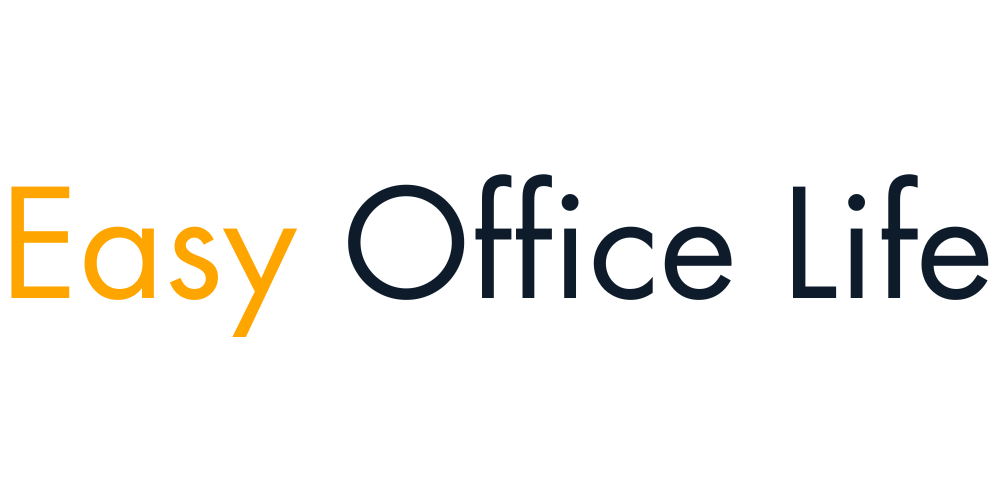
The shift towards remote work has emerged as a significant trend in today’s professional landscape, driven by advancements in technology and changing workforce expectations. While remote work offers numerous advantages, such as flexible schedules and the elimination of daily commutes, it also presents unique challenges that can impede productivity. Understanding the essence of remote work productivity is crucial for individuals and organizations looking to thrive in this virtual environment.
One of the primary obstacles remote workers encounter is distractions. The home environment may seem conducive to focus; however, interruptions from family, household chores, or even technological issues can hinder concentration. Furthermore, the absence of a structured office atmosphere may make it easier for individuals to lose track of their tasks. Overcoming these distractions is essential for maintaining high levels of efficiency in remote work.
Another challenge lies in communication barriers. In a conventional workplace, face-to-face interactions facilitate collaboration and information exchange. Remote workers, however, often rely on digital communication tools, which may not always convey tone or urgency effectively. This can lead to misunderstandings and decreased team cohesion. As such, maintaining clear lines of communication becomes vital for ensuring that projects advance smoothly.
Time management also poses a significant hurdle for many working remotely. Without the external structure of an office, employees may find it challenging to prioritize tasks or allocate their time effectively. Adopting strategies and utilizing the best apps for remote work productivity can assist in overcoming these hurdles, helping individuals streamline their processes, enhance communication, and manage their time precisely. In doing so, remote workers can maximize their output and achieve their professional goals more efficiently.
Key Features to Look for in Productivity Apps
When selecting the best apps for remote work productivity, it is crucial to evaluate several key features that enhance the overall effectiveness and efficiency of the tools. A primary aspect to consider is user-friendliness. Productivity apps should offer an intuitive interface that minimizes the learning curve and enables users to navigate easily. A straightforward design can significantly impact how quickly a team can adapt and fully utilize the software for their remote tasks.
Another essential feature is integration capabilities with other tools. The ideal productivity app should seamlessly connect with existing software ecosystems, including cloud storage, communication platforms, and project management tools. This interconnectivity helps teams avoid obstacles that arise from switching between different applications, ultimately streamlining workflows and boosting overall productivity.
Collaborative features are also a vital consideration. As remote work often involves teams spread across different geographical locations, the ability to communicate and collaborate effectively is paramount. Look for applications that facilitate real-time brainstorming, document sharing, and task assignments. These functionalities not only promote teamwork but also ensure that all members remain synchronized, contributing to a collective effort towards achieving productivity goals.
Finally, tracking functionalities should not be overlooked. Apps that offer time tracking, progress monitoring, and performance analytics can provide valuable insights into individual and team productivity. This data can help identify areas for improvement, allocate resources more effectively, and ultimately optimize workflow. By being aware of how time is spent and which tasks are completed, remote workers can refine their strategies for maximum efficiency.
In conclusion, selecting the right productivity apps for remote work involves careful consideration of user-friendliness, integration capabilities, collaborative features, and tracking functionalities. By focusing on these critical elements, individuals and teams can significantly enhance their productivity while maintaining an organized and efficient remote work environment.
Communication Apps for Remote Teams
Effective communication is paramount for the success of remote teams, and fortunately, there are numerous apps designed to enhance interaction among team members. Among the most popular tools are Slack, Microsoft Teams, and Zoom, each offering unique features tailored for the nuances of remote work. These communication apps not only facilitate seamless conversations but also foster a collaborative environment.
Slack, known for its real-time messaging capabilities, allows team members to create channels focused on specific projects or topics. This organization promotes efficient discussions and helps avoid information overload, as users can easily filter conversations. Moreover, Slack integrates with a variety of other apps, enabling teams to share files and manage tasks without switching platforms. As a quintessential tool for remote work productivity, it serves as a central hub for all communications, helping teams stay connected regardless of their geographical locations.
Microsoft Teams, on the other hand, emphasizes the integration of productivity tools. It combines chat, video, and file-sharing capabilities within a single platform. Teams can hold virtual meetings with high-quality video and audio, share documents in real-time, and even collaborate directly on files within the app. Its seamless connection with Microsoft 365 enhances the overall productivity of remote teams by ensuring that team members can access files and applications readily while communicating with one another.
Zoom has become synonymous with video conferencing, providing a reliable platform for large meetings, webinars, and virtual gatherings. With features such as breakout rooms and screen sharing, Zoom can accommodate various meeting formats, making it an essential tool for team discussions and presentations. While not primarily a messaging app, its capabilities significantly contribute to remote work productivity by ensuring effective communication when face-to-face interactions are not possible.
In conclusion, utilizing the best apps for remote work productivity, such as Slack, Microsoft Teams, and Zoom, can dramatically enhance collaboration and communication among remote teams. By integrating these tools into daily operations, teams can not only improve their workflow but also build a stronger connection, regardless of physical distance.
Project Management Tools for Enhanced Collaboration
In the evolving landscape of remote work, effective project management is paramount for ensuring that teams collaborate efficiently and meet their objectives. The best apps for remote work productivity include tools designed to facilitate planning, tracking, and managing tasks seamlessly. Three such notable applications are Trello, Asana, and ClickUp, each offering a unique set of features tailored for remote teams.
Trello utilizes a visual board system combining lists and cards which allows teams to conceptualize their workflow dynamically. This approach provides a clear overview of tasks, making it easy to assign responsibilities, monitor progress, and adjust priorities as needed. Trello’s simple drag-and-drop interface and integration capabilities with other tools further enhance its effectiveness, ensuring a smooth user experience that is especially beneficial in remote settings.
Asana, on the other hand, takes a more structured approach by offering task lists, timelines, and Gantt charts that aid in meticulous planning. Users can break down larger projects into smaller, manageable tasks, assign them to team members, and set deadlines. This level of organization is crucial in remote work environments, where clear communication of expectations can significantly impact productivity levels. Asana’s reporting features also provide insights into project status, enabling teams to identify bottlenecks quickly.
ClickUp stands out with its versatile functionality, accommodating various project management methodologies, from Agile to Waterfall. It integrates documents, goals, and reminders into its platform, allowing teams to centralize their resources. This comprehensive approach enables remote teams to foster collaboration while tracking their work effectively. By utilizing ClickUp’s features, members can prioritize tasks, visualize timelines, and enhance accountability across different projects.
Ultimately, leveraging these project management tools can significantly enhance productivity levels in remote work. By facilitating collaboration and providing clarity, Trello, Asana, and ClickUp are indeed among the best apps for remote work productivity, positioning teams for success in an increasingly digital workspace.
Time Management Apps for Better Efficiency
In the evolving landscape of remote work, effective time management is crucial for maximizing productivity. Among the best apps for remote work productivity are those specifically designed to assist users in prioritizing tasks, managing their schedules, and maintaining focus. Popular applications such as Todoist, RescueTime, and Pomodoro timers stand out for their unique features that facilitate better time utilization.
Todoist, a favored task management tool, allows users to create, categorize, and prioritize tasks seamlessly. Its intuitive interface provides options for setting due dates and reminders, which can significantly aid remote workers in managing their workload efficiently. Users can also utilize labels and filters to organize tasks based on projects or urgency, ensuring that they remain focused on what matters most. With the added functionality of collaboration, Todoist proves to be an indispensable tool for teams working remotely, as it fosters communication and collective accountability.
Another highly regarded application is RescueTime, which focuses on tracking how individuals spend their time on various tasks. By providing detailed reports and insights, RescueTime helps users identify productivity patterns and areas where time may be wasted. This awareness enables remote workers to adjust their habits and make necessary changes to enhance their efficiency. The tool also includes features that allow users to set goals and alerts, thereby encouraging a more disciplined approach to time management.
Lastly, the Pomodoro Technique, implemented through various timer apps, has gained popularity among remote workers for its effectiveness in maintaining concentration. This method encourages users to work in sprints of focused effort, typically lasting 25 minutes, followed by short breaks. By adhering to this structured approach, individuals can minimize distractions and sustain their productivity throughout the day, making it one of the best apps for remote work productivity.
Cloud Storage Solutions for File Accessibility
In the modern landscape of remote work, efficient access to files is vital for maintaining productivity. Cloud storage solutions have emerged as essential tools that enable remote workers to securely store, access, and share their documents from anywhere in the world. Among the various tools available, Google Drive, Dropbox, and OneDrive stand out as the best apps for remote work productivity, offering features specifically designed to enhance collaborative efforts.
Google Drive is a comprehensive file storage and synchronization service that seamlessly connects with other Google Workspace applications. Users can easily create, store, and share files, ensuring that team members have real-time access to updated documents. The ability to leave comments and suggestions directly on documents significantly enhances collaboration, making it an invaluable resource for remote teams.
Dropbox, another leading cloud storage solution, is well-known for its user-friendly interface and strong file sharing capabilities. With features like file request and shared folders, Dropbox allows teams to streamline their workflows while ensuring that files are easily accessible. The platform’s smart syncing technology helps optimize storage space by allowing users to access files without downloading them, further contributing to remote work productivity.
Microsoft OneDrive, integrated with the Microsoft 365 suite, provides robust collaboration features alongside cloud storage. It enables users to share files securely, synchronize changes in real-time, and manage different version histories of documents with ease. This integration with established office applications helps users maintain familiarity while working remotely.
In conclusion, the aforementioned cloud storage solutions exemplify the importance of digital tools in facilitating remote work. By providing secure access to files, enabling collaboration, and simplifying document sharing, these apps are integral to enhancing remote work productivity.
Note-Taking Apps for Organized Ideas
In the realm of remote work, efficient organization and clarity of thought are paramount. Note-taking applications play a crucial role in helping individuals capture ideas, maintain to-do lists, and organize diverse forms of information. Three notable tools that have garnered significant attention for enhancing remote work productivity are Evernote, Microsoft OneNote, and Notion. Each of these applications offers unique features that cater to various organizational styles.
Evernote is often lauded for its powerful organizational capabilities. Users can create notebooks, tags, and various formats for notes, including text, audio, and images. This flexibility allows for the seamless integration of different types of information, making it easier to retrieve and share relevant data. Evernote also supports syncing across devices, ensuring access to notes anytime, anywhere—an essential feature for remote workers seeking to stay organized.
Microsoft OneNote stands out by closely mirroring the experience of a traditional notebook while integrating with other Microsoft Office applications. Users can create sections and pages, add images and drawings, and even collaborate in real time. This collaborative aspect is particularly beneficial for teams working remotely, as it allows for the collective annotation and editing of notes. The application’s ability to integrate with services like Outlook and Teams further enhances its utility for managing tasks and communications.
Notion, on the other hand, serves as an all-in-one workspace that combines note-taking with project management. Its modular approach enables users to create databases, to-do lists, and calendars all in one place. The customization options allow teams to tailor their setup to specific needs, promoting greater productivity. Notion’s integration capabilities with other tools make it especially appealing for professionals looking to streamline various aspects of their workflows.
In conclusion, leveraging note-taking apps like Evernote, Microsoft OneNote, and Notion can significantly enhance remote work productivity. These tools not only promote organized ideas but also facilitate effective collaboration, enabling users to maximize their efficiency while working from different locations.
Wellness Apps for Maintaining Work-Life Balance
In the context of remote work, maintaining a healthy work-life balance is paramount to enhancing overall productivity and well-being. As the boundaries between home and work can easily blur, the integration of wellness apps can play a significant role in promoting mental wellness. One standout application is Headspace, which offers guided meditation and mindfulness exercises designed to alleviate stress and improve focus. Such tools can help remote workers establish a clear mental separation between their work tasks and personal time, fostering a sense of peace amidst the distractions of a home environment.
Another noteworthy option is Focus@Will. This productivity-boosting app combines music with neuroscience to enhance concentration during work hours. By tailoring music playlists to individual work styles, it enables users to create an ideal auditory backdrop that minimizes distractions, thereby boosting productivity. By shifting focus away from potential interruptions, remote workers can immerse themselves more fully in their tasks, which is crucial for maintaining efficacy in a home setting.
Additionally, effective scheduling is essential for maximizing productivity while ensuring well-being. Calendar apps such as Google Calendar or Microsoft Outlook are integral for managing work hours, scheduling breaks, and setting aside time for personal activities. These apps can help prevent burnout by enabling users to allocate periods for rest and leisure, ensuring they do not overcommit during their work hours. By using these applications, remote workers can better design their days to include breaks that foster mental recovery, thus contributing to long-term productivity and job satisfaction.
In conclusion, leveraging the best apps for remote work productivity, particularly those centered on wellness, allows individuals to maintain a balanced approach to their professional and personal lives. Investing time in these resources not only enhances productivity but also supports emotional and mental health, which are crucial for sustained success in any remote work environment.
Conclusion: Choosing the Right Apps for Your Needs
In today’s digital landscape, the rise of remote work has led to an increased demand for effective tools that enhance productivity. As we’ve explored in this blog post, the best apps for remote work productivity cater to various aspects of work life, including task management, communication, and time tracking. Each app offers unique features that can help streamline processes and foster collaboration among team members.
When selecting the right applications for your remote work needs, it is essential to consider your individual working habits and the specific requirements of your team. Reflect on questions such as: What tools do you currently use? Are there any specific pain points that certain apps could address? This self-assessment will aid in determining which apps might be the most beneficial for boosting your productivity while working remotely.
Additionally, the integration of apps into your daily workflow can significantly impact your efficiency. Experimenting with trial versions of various tools allows you to make informed decisions that suit your style of working. Remember that what works for one individual or team may not work for another; therefore, flexibility and adaptability are key. If you find yourself struggling to stay organized or communicate effectively, exploring the best apps for remote work productivity may be the solution you need.
We would love to hear about your experiences as well. What applications have you found indispensable during your remote working journey? Sharing insights and recommendations can help others navigate the vast array of productivity tools available today. Engaging with others in this conversation could uncover additional strategies that enhance efficiency in a remote work environment.






